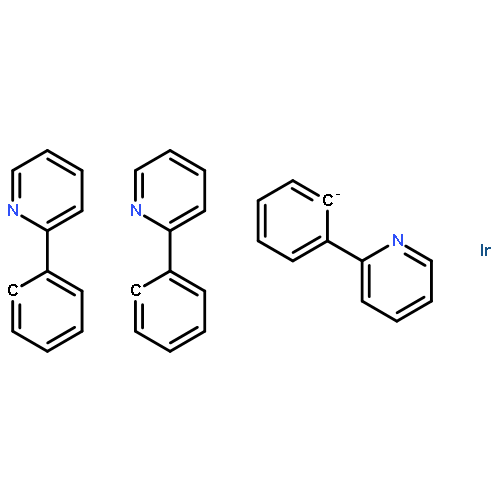Co-reporter: Qiang Fu, Jiangshan Chen, Changsheng Shi, and Dongge Ma
pp: 6579
Publication Date(Web):November 9, 2012
DOI: 10.1021/am301703a
The widely used hole-transporting host 4,4′,4″-tris(N-carbazolyl)-triphenylamine (TCTA) blended with either a hole-transporting or an electron-transporting small-molecule material as a mixed-host was investigated in the phosphorescent organic light-emitting diodes (OLEDs) fabricated by the low-cost solution-process. The performance of the solution-processed OLEDs was found to be very sensitive to the composition of the mixed-host systems. The incorporation of the hole-transporting 1,1-bis[(di-4-tolylamino)phenyl]cyclohexane (TAPC) into TCTA as the mixed-host was demonstrated to greatly reduce the driving voltage and thus enhance the efficiency due to the improvement of hole injection and transport. On the basis of the mixed-host of TCTA:TAPC, we successfully fabricated low driving voltage and high efficiency blue and white phosphorescent OLEDs. A maximum forward viewing current efficiency of 32.0 cd/A and power efficiency of 25.9 lm/W were obtained in the optimized mixed-host blue OLED, which remained at 29.6 cd/A and 19.1 lm/W at the luminance of 1000 cd/m2 with a driving voltage as low as 4.9 V. The maximum efficiencies of 37.1 cd/A and 32.1 lm/W were achieved in a single emissive layer white OLED based on the TCTA:TAPC mixed-host. Even at 1000 cd/m2, the efficiencies still reach 34.2 cd/A and 23.3 lm/W and the driving voltage is only 4.6 V, which is comparable to those reported from the state-of-the-art vacuum-evaporation deposited white OLEDs.Keywords: blue and white OLEDs; mixed-host; phosphorescence; small molecules; solution-processed;
Co-reporter: Qiang Fu, Jiangshan Chen, Changsheng Shi, and Dongge Ma
pp: 6024
Publication Date(Web):May 21, 2013
DOI: 10.1021/am4007319
Molybdenum oxide (MoO3) thin films were prepared by sol–gel methods at room temperature from the precursors of MoO3 powder mixing into NH3 or H2O2 solution and then directly treated by UV-ozone instead of widely used high-temperature annealing. Atomic force microscopy (AFM), X-ray photoelectron spectroscopy (XPS), and ultraviolet photoelectron spectroscopy (UPS) characteristics demonstrated that the room-temperature sol–gel derived MoO3 thin films exhibited excellent uniformity, unchanged chemical structure, and high work function. For the first time, the novel solution-processed MoO3 thin films were successfully applied as the hole injection layers (HILs) for solution-processed organic light-emitting diodes (OLEDs). The efficiencies of the resulting OLEDs were comparable or even higher than that of the device using PEDOT:PSS as the HIL. More importantly, the lifetimes of the solution-processed OLEDs are improved by nearly 2 orders of magnitude. This study should provide a potential approach to develop low-cost, high-performance, and long-lifetime OLEDs for practical applications.Keywords: hole injection; interface stability; molybdenum oxide; organic light-emitting diodes; solution process;


